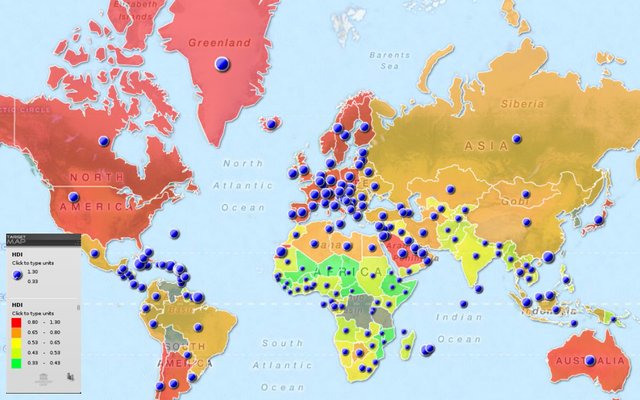Human Development Index of the 20th Century
The human development index is certainly the precise tool to analyze our growth. I’ve taken 25 parameters and referring several authentic websites like wordldwatch.org & worldbank.org, I’ve given the following statistics. I hope it will be useful for everyone to understand how we progressed in the last century to chart our course in the remaining part of 21st century.
Population : From 1.6 billion in 1900 to 6 billion in 2000
No. of Independent Countries : From 53 in 1900 to 230 in 2000
Average Forest to land surface area ratio : from 7.5% in 1900 to less than 3 % in 2000
Average global temperature: 13.74 degree Celsius (56.71 F) in 1900 to 14.51 degree Celsius (58.12) in 2000
War related deaths: 123 to 125 million deaths due to war in the entire 20th century.
Number of satellites launched in 20th century: Nearly 1500 (in the entire 20th century)
Average World GDP figures : Around 4 % (weighted average for entire 20th century)
Military Spending of 20th century: World Average 4 % in 1900 (GNP) 2% in 2000 (GNP)
Spending on Education in 20th Century: 1.3 % of GDP to 6.4 of GDP in 2000
Percentage of illiterate people: 70 percent in 1900 to 25 percent in 2000
Spending on Health in 20th century (World Average): 0.3 % of GDP in 1900 to 6.5 % in 2000
The Growth of General Government Expenditure (Percentage of GDP): Around 13 % in 1900 to approx. 45 % in 2000
Average rate of inflation: Around 9 % in 1900 to 2.54 % in 2000
Co2 emission of 20th century: around 1304 Metric Tons in 1900 to 24000 Metric Tons in 2000
Loss of Bio-diversity in 20th century: 1 per cent of GDP per year
Extinction of species: 477 vertebrates disappeared in the 20th century out of 45000 known species
(that is slightly above 1 %).Life Expectancy ratio: roughly 35 to 40 years 1900 to around 70 years)
Human-rights related deaths in 20th century: around 70 to 75 million people
Number of migrant population in the world: 3 % in 1900 2.8 % in 2000
Average cost of military conflict in terms of GDP: 5 % of GDP (global weighted average)
Percentage of people who live below the poverty line (global weighted average):
Gender Inequality (in terms of women earning less than their male counterparts) : 17 % in 1900 to 7.5 % in 2000
Poor Health condition : 32 % in 1900 to 12 % in 2000
Malnutrition : 11 % in 1900 to 6.5 % in 2000
Indoor Air Pollution (GWP – Global Warming Potential) : 23 % in 1900 to Around 7 % in 2000
Data taken from: United Nations (Department of Economic and Social Affairs), World Resource Institute, International Organization for Migration, worldwatch.org & Worldbank.org
Book Reference : Public Spending in the 20th Century A Global Perspective
By Vito Tanzi & Ludger Schuknecht
Data Compiled by : Srini
